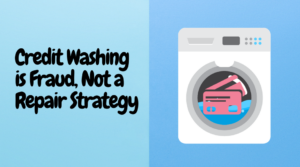Most credit cards have a short period where you may not be charged interest on your credit card purchases. This timeframe is known as a grace period.
What is a grace period for a credit card
A grace period for a credit card is a timeframe during which you can pay your credit card balance in full without incurring any interest charges. It is essentially an interest-free period that starts after the billing cycle ends and before the due date for that billing cycle.
During this time, if you pay the full statement balance by the due date, you won’t be charged any interest on your purchases.
How the grace period typically works
Billing Cycle. The billing cycle is a specific period (usually a month) during which you make purchases with your credit card. At the end of the billing cycle, the credit card issuer generates a statement that details your transactions, including the total amount owed.
Statement Period. The statement period is the duration covered by the billing cycle. At the end of this period, a statement is generated and sent to you, indicating the total balance and the due date for payment.
Grace Period. The grace period is the time between the end of the billing cycle and the due date for the payment of that cycle. If you pay the full statement balance within this period, you won’t be charged any interest on your purchases.
It’s important to note that the grace period typically applies only to new purchases and not to cash advances or balance transfers. Interest may accrue immediately on cash advances, and balance transfers might have their own terms and conditions.
The length of the grace period can vary by credit card issuer and may depend on factors such as the terms of the card agreement and how the billing cycle is structured.
Some credit cards have a more extended grace period, while others might have a shorter one.
Always check your credit card agreement or contact your card issuer to understand the specific terms and conditions related to the grace period for your credit card.
How to determine your credit card grace period
To determine your credit card’s grace period, you can follow these steps:
- Check Your Credit Card Agreement – The most accurate and reliable way to find information about your credit card’s grace period is to review your credit card agreement. This is the legal document provided by the credit card issuer that outlines the terms and conditions of your card. Look for a section related to billing cycles, statements, and the grace period. You can find this document online through your credit card issuer’s website or by contacting their customer service.
- Review Your Monthly Statements – Your credit card statement will include important information about your billing cycle, the statement period, and the due date for payment. Look for details on the grace period in the terms and conditions section of your statement. Some credit card issuers provide this information directly on the statement, while others may refer you to the credit card agreement for more details.
- Contact Customer Service – If you are unable to find the information in your credit card agreement or on your statements, you can contact your credit card issuer’s customer service. Customer service representatives can provide you with information about your specific credit card terms, including the length of the grace period. Be sure to have your credit card details on hand when you call.
- Check the Issuer’s Website – Some credit card issuers provide information about their credit card terms, including the grace period, on their official websites. Log in to your online account or navigate to the credit card section of the issuer’s website to find information related to billing cycles, statements, and grace periods.
Remember that the grace period is typically associated with purchases, and it may not apply to other transactions like cash advances or balance transfers.
Additionally, grace periods can vary between credit card issuers and even between different credit card products from the same issuer. Always refer to the specific terms of your credit card agreement for the most accurate and up-to-date information.
Does every credit card have a grace period?
Not every credit card comes with a grace period. While many credit cards offer a grace period as a feature, it’s not a universal feature across all credit cards. Whether a credit card has a grace period or not depends on the terms and conditions set by the card issuer.
Here are some key points to keep in mind:
- Standard Practice – Most traditional credit cards issued by major banks come with a grace period. This period typically allows cardholders to avoid paying interest on their purchases if they pay the full statement balance by the due date.
- Store Credit Cards and Subprime Cards – Some retail credit cards and credit cards designed for individuals with lower credit scores may not have a grace period. These cards might start accruing interest on purchases immediately, even if the statement balance is paid in full by the due date.
- Credit Card Terms Vary – Credit card terms can vary widely between issuers and even between different credit cards from the same issuer. It’s essential to read the terms and conditions provided by the card issuer to understand whether a grace period is offered.
- Check the Credit Card Agreement – The credit card agreement, a legal document provided by the issuer, contains detailed information about the card’s terms, including the presence or absence of a grace period. You can find this document on the credit card issuer’s website or by contacting their customer service.
- Alternative Payment Structures – Some credit cards, particularly those with alternative payment structures or features like charge cards, may not have a traditional grace period. Instead, they may require the cardholder to pay the full balance each month.
Before applying for or using a credit card, it’s crucial to review the terms and conditions associated with that specific card. Pay attention to details related to billing cycles, grace periods, interest rates, and any other fees or charges.
If you’re unsure about the terms of your credit card, contact the issuer’s customer service for clarification.
Do grace periods apply when you get a credit card advance
Typically, grace periods do not apply to credit card cash advances. A grace period is a feature that allows you to avoid paying interest on your credit card purchases if you pay the full statement balance by the due date. However, when it comes to cash advances, the terms are often different.
Here are some key points to understand about credit card cash advances:
- Immediate Interest Accrual. In most cases, when you take a cash advance using your credit card, interest starts accruing immediately. Unlike regular purchases for which you may have a grace period, cash advances are considered a different type of transaction and are subject to different terms.
- Higher Fees and Interest Rates. Cash advances often come with higher fees and interest rates compared to regular purchases. Credit card issuers may charge a cash advance fee, which is a percentage of the amount withdrawn, in addition to the interest that accrues.
- No Grace Period for Cash Advances. Since interest on cash advances starts accruing right away, there is usually no grace period as there is with regular purchases. Even if you pay off the cash advance quickly, you may still be charged interest for the time the funds were outstanding.
- Separate Limits. Credit card issuers often set separate credit limits for cash advances. The cash advance limit may be lower than your overall credit limit, and exceeding this limit can result in declined transactions or additional fees.
It’s essential to check the terms and conditions of your specific credit card agreement to understand the fees, interest rates, and policies related to cash advances.
If you’re considering a cash advance, be aware of the potential costs involved and explore alternative options, as cash advances can be an expensive way to access funds. If you have questions about your credit card’s terms, contact your card issuer’s customer service for clarification.

















